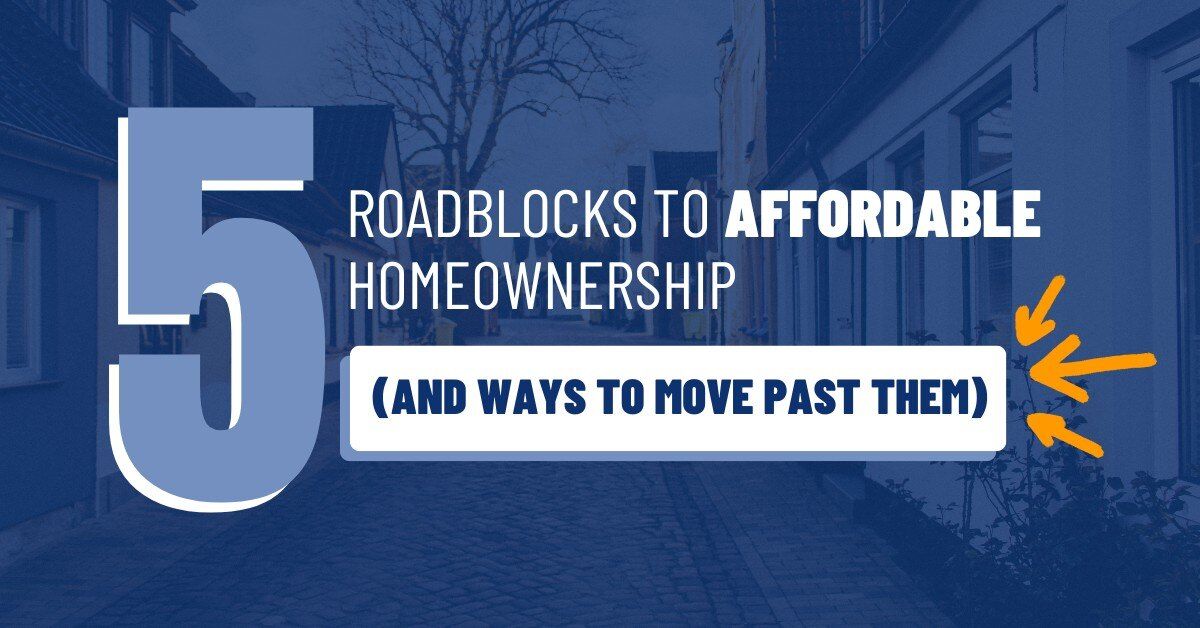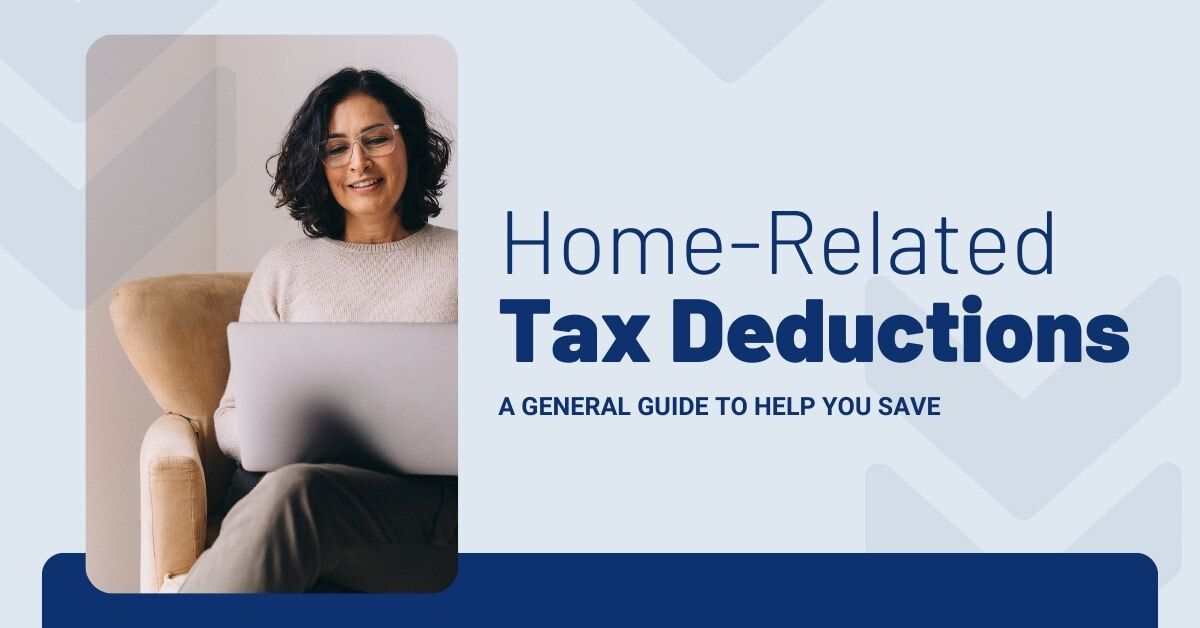35 Tips to Furnish Your New Home for Less

35 Tips to Furnish Your New Home for Less
Buying a new home is one of the most exciting experiences in life. And if you’re like most homebuyers, you’ll be planning your furniture placement and decor before the ink dries on your offer letter.
But before you run to the nearest home goods store, take a deep breath. First, you’ll need to delay any major purchases before you close on your new home. A large outlay or additional line of credit could lower your credit score and, thus, impact your mortgage terms.1 Second, moving and closing costs can add up quickly, so it’s important to be strategic with your remaining budget.
But don’t worry! There are plenty of ways to save on home essentials, and we’ve rounded up some of our favorites to share with you.
Prioritize What You Really Need Before You Start Shopping
According to Home Advisor, the national average cost to furnish a new house is $16,000, but it can easily soar higher.2 That’s why we recommend starting with a thorough assessment of what you already have and what you actually need to start life in your new place. Here are some steps to help you prioritize your purchases and keep spending in check.
● Make a list of everything you need. Going room by room could help you brainstorm—for example, you might list items ranging from a mattress to blackout curtains for your new primary bedroom.
● Inventory what you already have. Cross the big (dining table) to the small (kitchen knives) off your list as you go.
● Divide the remaining items into three groups: things you need right away (a mattress), items you’d like to have in the near future (a coffee table for your living room), and pieces that can wait (an area rug).
● Calculate your budget. Figure out how much money you’ll have available for immediate purchases after the sale has closed, and start researching the items on your priority list to understand how they’ll fit into your budget.
● Don’t rush the process. Bringing older items to your new space doesn’t mean you need to keep them forever. Consider hanging onto pieces that can tide you over for a year or two until your bank account has recovered from the costs of a home purchase.
Before you start shopping, make sure you know which appliances and fixtures are included with your home purchase. We can inform you of the standard contract terms when you’re making an initial offer and note any additional items that you would like to request.
Time Your Purchases To Make The Most Of Seasonal Sales
Did you know that some home items predictably go on sale at certain times of the year? If you can wait to buy these pieces when prices are lower, you could save significantly. Here are some of the best times to buy household essentials:3,4
● Bedding and linens: January
● TVs: Black Friday/Cyber Monday and late January (before the Super Bowl)
● Furniture: February and August, as well as Black Friday, Memorial Day, and Labor Day
● Large appliances: Labor Day through October
● Small kitchen appliances: May
● Mattresses: Holiday weekends, especially Memorial Day, Labor Day, and 4th of July
● Vacuum cleaners: April
● Tools: June
● Outdoor furniture: August through October
Generally speaking, holiday weekends (as well as Black Friday and Cyber Monday) tend to be great times to find deals. If the item you’re looking for is seasonal—like patio furniture or holiday decorations—waiting until the end of that season usually pays off.
Find Alternative Shopping Sources
Can’t wait for a sale? It’s time to think outside of the box (the big-box stores, that is). There are plenty of surprising places to find great furniture and houseware deals.
● Check out overstock and liquidation stores. These stores purchase items other retailers haven’t sold and offer them at a steep discount. The inventory can be hit or miss, but you can often get a great deal if you find what you’re looking for.5
● Try private membership/warehouse stores. Retailers like Costco and Sam’s Club often have great deals on home goods. If you’re not already a member, ask family or friends if they are willing to take you to look around before you commit.
● Consider open-box items. When buyers return items like furniture or electronics, retailers can’t always sell them as new, even if they haven’t truly been used. Look online for open-box deals from retailers like Wayfair and Amazon Warehouse or visit local retailers to see what they have in stock.
● Give scratch-and-dent appliances a chance. These appliances are brand new but sold at deep discounts because their external packaging was damaged. Typically, this means that flaws are purely cosmetic—but it’s always possible that the merchandise has suffered more serious damage. So, be sure to check out the appliances carefully and ask about included warranties.6
● Expand your window treatment search. Window treatments can be surprisingly expensive, but it’s often possible to save by buying off-the-shelf offerings in standard sizes. If you need a custom size or material, consider ordering online from a discount supplier and installing them yourself.
● Shop secondhand. In addition to thrift stores and garage sales, Facebook Marketplace, NextDoor, and Craigslist are all great places to find deals in your area.
Are alternative shopping sources still a stretch for your budget? Check out local Freecycle or “Buy Nothing” groups, which are often hosted on Facebook. Participants offer big and small items they no longer need—everything from furniture to clothing hangers—for free to other members.7,8
Don’t Be Afraid To Negotiate For A Better Deal
Many people don’t realize that prices for home goods, from furniture to appliances, are often negotiable. While asking for a discount can be intimidating, it’s common practice in many industries, although more so at independently-owned stores than chains. Here are a few tips:9,10
● Comparison shop before you walk into a store. If you can find a lower price for the same item elsewhere, many retailers will match it.
● Ask the store associate or manager for the best price available. They may be able to offer additional discounts or coupons.
● If you can pay in cash, ask if you can get a discount for doing so. The seller may be happy to offer a small price reduction to avoid paying processor fees.
● Call ahead to ask about applicable discounts. Some retailers offer price reductions for active military, veterans, teachers, first responders, or senior citizens on certain days or times of the year.
● Point out scratches or dings to the sales associate. They may be willing to offer a discount to compensate for the imperfection.
● Ask about floor models. Many stores offer these pieces at a lower price, even if they’re in like-new condition.
After you’ve negotiated a killer deal, don’t forget to ask for free or discounted delivery! Sometimes furniture and appliance stores will offer complimentary delivery or installation if you spend a certain amount or purchase multiple items.
Make The Most Of Reward Programs And Coupons
Every penny counts when you’re on a budget—and spending a little extra time maximizing reward programs and discounts is usually worthwhile.
● Sign up for a change of address kit with the United States Postal Service. You’ll need to do anyways to forward mail to your new address, and it comes packed with valuable coupons.11
● Make sure you never miss a sale. Sign up for your favorite retailers’ email lists and follow them on social media for discounts and sale alerts.
● Take advantage of loyalty programs. If you’re making a big purchase or getting multiple items from one store, ask about free loyalty programs. Signing up often comes with an introductory coupon.
● Consider store credit cards (carefully). Store credit cards can offer significant discounts—but only charge items you can pay off right away to avoid interest, and never open new lines of credit until your home purchase is complete, since it can affect your credit score.
● Enroll in coupon and cashback programs. When you’re shopping online, programs like Rakuten and Honey can help you find coupon codes and give you cash back on purchases.
While you’re at it, why not set up a housewarming registry?12 You can share the link with family and friends if they ask what you need—and you can also use it to score discounts. Many stores offer a percentage off to help you buy unpurchased items on your registry.
Get Creative
If you want to avoid a cookie-cutter home aesthetic—and save a few bucks—try reimagining your existing furniture and how it could fit into your new space. Here are a few of our favorite strategies.
● Repurpose what you have. Instead of buying a new item to fit a specific purpose, ask yourself if you can use what you have in a different way. For example, repurpose an old dresser as a television stand or use a mismatched dining chair in your home office.
● Upgrade existing items. Sometimes, a new coat of paint or varnish, or simply swapping out drawer pulls and handles, can lend a new lease on life to an old piece of furniture. You can also keep this strategy in mind if you see second-hand items that would be just right if they were a different color or had nicer fixtures.
● Reupholster instead of buying new. If you have a tired-looking sofa or chair that’s still comfortable and stable, think about getting it reupholstered in new fabric instead of replacing it.
● Get handy. Building furniture is certainly not for everyone, but with some basic tools and help from the internet, you may find that simple items like headboards are well within your grasp. You might also be able to repair pieces you already have and avoid shopping altogether.
Do-it-yourself projects can be fun, but they aren’t for everyone. If you’d like some professional help, reach out for a list of our recommended service providers.
We’re Here To Help
We know budgeting for a new home can be overwhelming, and we want to make the process easier for you. If you’re considering a home purchase, we can advise you on a realistic budget and help you review your options. We can also offer insights on other financial considerations and programs and incentives that can help make homeownership more attainable. Reach out for a free consultation.
The above references an opinion and is for informational purposes only. It is not intended to be financial, legal, or tax advice. Consult the appropriate professionals for advice regarding your individual needs.
Sources:
1. Bankrate -
https://www.bankrate.com/mortgages/avoid-mortgage-closing-missteps/
2. Furniture Bank -
https://www.furniturebank.org/how-much-does-it-cost-to-furnish-an-apartment/
3. US News -
https://money.usnews.com/money/personal-finance/saving-and-budgeting/articles/the-best-time-of-year-to-buy-everything
4. NerdWallet -
https://www.nerdwallet.com/article/finance/wht-to-buy-every-month
5. Business Insider -
https://www.businessinsider.com/personal-finance/strategies-to-save-money-on-furniture-for-my-new-home?r=US&IR=T
6. CNET -
https://www.cnet.com/home/kitchen-and-household/buy-scratch-and-dent-appliances/
7. Real Simple -
https://www.realsimple.com/home-organizing/green-living/buy-nothing-groups
8. Freecycle -
https://www.freecycle.org/
9. Consumer Reports -
https://www.consumerreports.org/cro/magazine/2013/08/how-to-bargain/index.htm
10. Realtor.com -
https://www.realtor.com/advice/home-improvement/furniture-stores-money-saving-tricks/
11. The Krazy Coupon Lady -
https://thekrazycouponlady.com/tips/money/usps-moving-coupons
12. Taste of Home -
https://www.tasteofhome.com/article/housewarming-registry/





